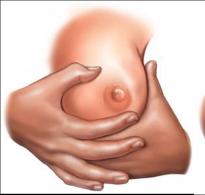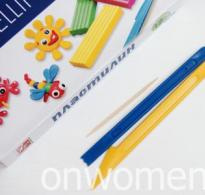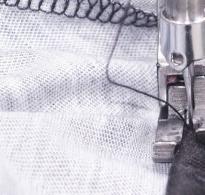Notes on traffic rules in the middle group of dows. Summary of a lesson on traffic rules in the middle group “We play, we study the rules of the road.” Let's remember the meaning of traffic lights
Summary of an integrated lesson for children of middle preschool age "Road rules - rules of life."
Description of work: This material will be useful to kindergarten teachers of middle groups; this summary is developed for children of middle preschool age; the summary is used in safety classes.Summary of the integrated lesson "Road rules - rules of life."
Target: formation of a consciously correct attitude towards compliance with traffic rules as a pedestrian.Tasks: consolidate children's knowledge about traffic rules, teach them to apply knowledge previously acquired in practical activities. Consolidate knowledge about the purpose of road signs and traffic lights; that people walk on the sidewalks, cross the road at crossings, when the traffic light signal permits. Continue to cultivate attentiveness and the ability to navigate when crossing the road.
Integrative tasks:
"Safety":
- expand and consolidate children’s knowledge about traffic lights and traffic rules;
- continue to familiarize children with road signs;
- encourage children to take initiative in order to gain new knowledge.
- introduce the profession of people who monitor compliance with traffic rules.
"Communication":
- enrich children's vocabulary with the names of road signs and transport.
"Socialization":
- develop children’s play activities;
- introduce basic generally accepted norms and rules to relationships with peers.
“Reading fiction”:
- expand children’s vocabulary with poems and riddles;
-improve performing skills when reading poems.
"Artistic creativity":
- improve the skill of using scissors when cutting strips;
- cultivate independence, develop the ability to actively and creatively apply previously learned application methods.
Demo material: traffic police inspector doll, road signs, toy rod, multimedia installation.
1. Organizational moment
The teacher and children gather in a circle:
Hey! Guys, come over,
Look at each other
Say hello with your palms
Everyone smile a little.
Warm-up is carried out (poems by S. Mikhalkov).
I roll on two wheels, (They go in a circle, one after another.)
I turn two pedals, (They walk, raising their knees high.)
I hold on to the steering wheel, look forward, (Hold an imaginary steering wheel with their hands.)
I know: the turn is coming soon. (They turn and go the other way.)
When finished, sit on chairs.
Educator: What is your mood?
Children: Good.
2. Main part
I know that you love to play, and now I want to play a game with you. The game “Stand up, those who...” is being played. Children sit on chairs arranged in a circle, listen and complete the teacher’s task:
Stand up, those who love to play with cars?
Stand up, those who come to kindergarten on foot?
Stand up, those who come to kindergarten by bus?
Stand up, those who are brought to kindergarten by car?
Stand up, those whom your mother brought today?
Stand up, those whom dad brought today?
Stand up, those who come to kindergarten alone, without adults?
Look, guys, now you are all sitting, this means that you all come to kindergarten together with adults, with mom or dad, with grandparents. Why do you think? (children's answers). That's right, you and I know that the street, the road, is a place where you need to be very careful so that trouble does not happen.
Remember what the rules are called that people must follow if they are going to go out and go or go somewhere? (children's answers). That's right, these are the rules of the road. What do you and I know about traffic rules?
In chorus:
“To never get into difficult situations,
You must know and follow the rules of the road!”
Educator: Now we will check how well you know the rules of the road. To cross the road, you need to know the rules of the road. Who knows how to cross the road?
Children: Children give individual answers.
You should walk along the sidewalk as far as possible from the roadway;
When crossing the road, you should stop at the roadway and look to the left, then to the right and again to the left;
You can cross the road only when the traffic light is green;
They cross the road in safe places - at a traffic light, at a zebra crossing;
Educator: We repeated the basic rules of the road, guys, today I also want to introduce you to the profession of people who monitor compliance with traffic rules. Maybe some of you know? (children's answers). Let's see who it is (draws the children's attention to the screen of the multimedia equipment). Traffic police inspector. Now look carefully at the hands of the traffic police inspector. What is in his hands?
Children: rod.
Educator: That's right, rod.
Guys, tell me, why does a traffic police officer need a baton?
Children: in order to control the movement of cars and pedestrians on the roads.
Educator: Well done, you answered correctly.
Now let’s play the game “On the Road”: you are all cars and must move in the same direction, in a column. And I, the traffic police inspector, will show you the direction of the road with the help of a baton and words. The first car will be Dasha. The rest of the cars stand behind her. Let's look carefully at my rod.
Assignment: “A column of cars drives straight, turns right (the inspector raises his right hand), turns right again (raises his right hand again), drives straight (points his hand straight), turns left (raises his left hand), drives straight (points his hand straight), turns left (turns back).
Educator: everything was done correctly. You guys are great! Such difficult tasks, but you completed everything! This means you know the rules of the road well!
Physical education minute:
The road is not a path, the road is not a ditch,
First look left, then look right.
Turn to the left and smile at the friend next to you.
Stomp your right foot: 1, 2.3,
Shake your head: 1, 2.3,
Raise your hands up
And clap: 1, 2, 3.
Didactic game “Assemble a road sign.” From the puzzle, children collect road signs and tell which sign they collected.
3. Practical part (making a wand).
Explanation of techniques and sequence of work.
Collective production of the wand.
Educator: Well done! Everyone completed the task. Thank you guys for making the rod.
As a souvenir, I want to give all of you badges - medals that certify your knowledge of the rules of the road.
4. Summary
Today in class we reviewed the rules of the road, played games and got acquainted with the baton, and in order for you to remember it better, we made it for you.
Synopsis of NOOD in the middle group of preschool educational institutions on the topic “Country of Traffic Rules”
Software tasks:consolidate children's knowledge about traffic lights and their signals;
systematize children’s knowledge about road signs and their meaning;
systematize children’s knowledge about road situations and how to behave correctly;
develop observation skills, visual memory;
develop the ability to answer fully.
role-play various situations on the road;
Material: :
Cars, road signs, transport area, traffic light.
Preliminary work:
problem-search conversation: “Our friends on the road”;
looking at pictures about road signs, traffic lights, transport.
Progress of the lesson:
Educator: (the teacher is part of the group) Hello guys!
Children: Hello!
Educator: Guys, today I want to invite you to the country of “Road Rules”. Do you want to go on a trip with me?
Children: Yes. (children get dressed and go outside)
Educator: Let's imagine that you and I are walking around this unusual country. There are many streets in this big beautiful country. Many cars and trucks, buses move along them and no one bothers anyone. This is because there are clear and strict rules for car drivers and pedestrians. To maintain our health and life, we must strictly follow traffic rules. Guys, tell me what and who helps to follow traffic rules.
Children: Traffic lights, road signs, and traffic controller.
Educator: Why do you need a traffic light?
Children: To regulate traffic
Educator: A traffic light has three different signals: tell me about them
(Children tell what each traffic light means)
Red light is the strictest. Stop! There is no further road, the path is closed to everyone!
Yellow light - warning, wait for a signal to move.
Green light - says “Come on, the way is open!”
Educator: Children, at what traffic light can you cross the road?
Children: On the green light.
Educator: Well done! Our traffic light has just turned green and we can cross the road. (children cross the pedestrian crossing)
Educator: Well done boys! Shall we play a game?
It's called "Build the right traffic light." I need helpers. Who wants to help me?
(those who want to come out to play)
Educator: Guys, your task is to correctly place all the traffic lights in order. So let's begin!
(children arrange traffic lights in a certain order)

Educator: Look guys, did they do the right thing?
Children: Yes
Educator: Right! The traffic light also has riddles for everyone. He has assistants, they are called road signs. Do you guys know such assistants?
Children: Yes
Educator: First riddle, listen carefully!
1. Black and white stripes
Pedestrian walks boldly
How many of you guys know
What does the sign warn about?
Give the car a quiet ride -
Children: Crosswalk
Educator: Guys, why is this sign needed?
Children: He shows us where to cross the road
Educator: 2. Only cars drive here
The tires flash menacingly
Do you have a bicycle?
So stop! There is no road!
Children: Bicycles are prohibited
Educator: That's right guys, what does this sign tell us?
Children: This sign warns us that riding bicycles here is very dangerous.
Educator: 3. In the white triangle
With red border
For schoolchildren
Very safe
This road sign
They know everything in the world
Be careful,
On road -
Children: Children
Educator: Guys, what does this sign tell us?
Children: This sign means "Caution Children". The driver sees this sign from afar and slows down, because children may be crossing the road at this point.
Educator: Where are these signs usually placed?
Children: Near schools, kindergartens.
Educator: You see how many assistants are on the road at the traffic lights! And now we will imagine that we are drivers. Do you know who they are?
Children: Those who sit behind the wheel of a car?
Physical exercise “We are drivers”:(children must show movements)
I'm flying, I'm flying
At full speed
(children are walking)
I'm a driver myself
(imitate steering wheel control)
And the motor itself
(shoulder circles)
I press the pedal
(bend the leg at the knee)
And the car rushes into the distance.
(running in place)
Educator: Okay, we've warmed up, and one more question, please tell me where people are waiting for the bus and taxi?
Children: At the bus stop.
Educator: Well done. Do you want to play the game "Taxi and Passengers"
Children: Yes.
Educator: Then we cross the pedestrian crossing and go to the stop. Guys, what needs to be done to make the taxi stop?
Children: Raise a hand.
(Children play the game “Taxi and Passengers”)




Reflection.
Educator: Guys, you are great, you know everything. Well, now it’s time for us to go back to kindergarten. I hope you enjoyed our trip? What did you like most?
(children's answers)
Municipal preschool educational institution
city of Dzhankoy, Republic of Crimea
"Kindergarten No. 9 "Firefly"
Lesson summary on traffic rules in the middle group
Topic: “Traffic rules are worthy of respect.”
Educator: Prilipko Svetlana Vladimirovna,
teacher of the highest category
Dzhankoy, 2015
Software tasks:
consolidate children's knowledge about traffic lights and their signals;
systematize children’s knowledge about road signs and their meaning;
consolidate knowledge about land and air transport;
develop observation skills, visual memory;
develop the ability to answer fully.
Material:
a picture depicting the street and various situations on the road;
pictures of road signs;
Preliminary work:
looking at pictures about road signs, traffic lights, transport.
Progress of the lesson:
Educator: Hello, guys!
Children: Hello!
Educator: Guys, today I want to invite you to the country of “Road Rules”.
Educator: Let's imagine that you and I are walking around this unusual country. There are many streets in this big beautiful country. Many cars and trucks, buses move along them and no one bothers anyone. This is because there are clear and strict rules for car drivers and pedestrians. To maintain our health and life, we must strictly follow traffic rules. And our friend today will help us remember them, who invited us to this country. (showing the picture “Traffic Light”) But first, we need to solve the riddle.
Three colorful circles
They blink one after another.
They light up, blink -
They help people.
Children: Traffic light
Educator: Why is it needed, guys?
Children: To regulate movement
Educator: The traffic light has three light signals:
Red light - The strictest, Stop! There is no further road, the path is closed to everyone!;
Yellow light - warning, wait for a signal to move;
Green light - says “Come on, the way is open!”
Educator: Children, at what traffic light can you cross the road?
Children: On the green light.
Educator: Well done, guys! Shall we play a game?
Educator: It’s called “Assemble the traffic light correctly.” I need an assistant. Who wants to help me?
(one child comes out)
Educator: Guys, your task is to correctly arrange all the colors of the traffic light in order. So let's begin!
(the child places the circles in a certain order)
Educator: Look, guys, did he do the right thing?
Children: Yes
Educator: That's right, sit down! The traffic light also has riddles for everyone. He has assistants, they are called road signs. Have you heard about them?
Children: Yes
Educator: So, the first riddle, listen carefully!
1. Black and white stripes
Pedestrian walks boldly
How many of you guys know
What does the sign warn about?
Give the car a quiet ride -
Children: Pedestrian crossing
Educator: Guys, look, our “Pedestrian Crossing” road sign is missing. I need an assistant to help me find him.
(the child comes out and chooses the appropriate sign)
Educator: Guys, look, right? Why is this sign needed?
Children: He shows us where to cross the road
2. Only cars drive here
The tires flash menacingly
Do you have a bicycle?
So stop! There is no road!
Children: Bicycles are prohibited.
Educator: Look, the “No Bicycles” sign is missing! Who will help find him?
Educator: right guys, look? What does this sign tell us?
Children: This sign warns us that riding bicycles here is very dangerous.
3. In the white triangle
With red border
For schoolchildren
Very safe
This road sign
They know everything in the world
Be careful,
On road -
Children.
Educator: Guys, who will help find him? (one child comes out)
What does this sign tell us?
Children: This sign means “Caution Children.” The driver sees this sign from afar and slows down, because children may be crossing the road at this point.
Educator: Where do they usually put such signs?
Children: Near schools, kindergartens.
Educator: You see how many helpers are on the road at the traffic light! And now we will imagine that we are drivers. Do you know who they are?
Children: Those who drive a car?
Physical exercise “We are drivers”:
(children must show movements)
I'm flying, I'm flying
At full speed
(children are walking)
I'm a driver myself
(imitate steering wheel control)
And the motor itself
(shoulder circles)
I press the pedal
(bend the leg at the knee)
And the car rushes into the distance.
(running in place)
Educator: Guys, what types of transport do you know?
Children: land, air, water.
Educator: What kind of transport is ground-based?
Children: car, bus, trolleybus, truck, etc.
Educator: What type of transport is airborne?
Children: plane, helicopter.
Educator: What type of transport is aquatic?
Children: ship, steamship, motor ship
Educator: Well done! Let's play the game “Which picture is missing?” Who will help me?
(child comes out)
Educator: Look, right guys? What type of transport is this? Where does he go?
Children: on the roads
Children: in the sky
Educator: I need one more assistant. There is also a missing picture here.
Educator: Look, guys, is everything right? What type of transport is this? Where can we meet him?
Children: on the water
Educator: That's right, guys.
Educator: Well guys, it’s time for us to go back to kindergarten. We learned a lot about traffic rules. Did you enjoy our trip? What did you like most?
Game activity for children 4-5 years old in a preschool educational institution “We play, we study traffic rules”
This summary is intended for teachers of the middle group, children from 4 to 5 years old. The presented work will help children learn the rules of the road.
Target: Formation of knowledge about traffic rules.
Tasks:
1. Continue to develop children’s ability to apply knowledge previously acquired in practical activities.
2. To strengthen children’s understanding of road signs, traffic lights, sidewalks and other attributes related to traffic rules.
3. To identify the level of readiness of preschoolers to solve road traffic situations.
4. Activate the processes of thinking, attention and speech of children; cultivate intelligence and resourcefulness.
5. Foster the need for children to be disciplined and attentive on the streets, careful and circumspect.
Equipment: city street layout, tree with signs, small traffic lights, colored circles.
Progress of the lesson:
Children stand near a model of a city street (without road signs, emergency situations on the road are created from cars).
Educator:- In one distant fairy-tale country there is a small toy city. The inhabitants of this town lived and did not grieve. They were in great friendship with road signs, followed all traffic rules, respected and listened to the main traffic light. Therefore, in this city there was always order and peace on the streets. But one day an evil and powerful hurricane hit the city and took away all the road signs. Look what happened in the city. (Children examine the model, discuss the emergency situation: there are no road signs, car accidents, the traffic light has disappeared).
Educator:- Yes, guys, there is no order in the city. The signs need to be rescued and returned to their place. But how to do this?
Children: we need to look for signs.
Educator: The hurricane took the signs far away, we need to go. And to find out what we will go on, you need to guess the riddle:
What a miracle - the blue house
The windows are bright all around.
Wears rubber shoes
And it runs on gasoline.
Children: bus.
Educator: What type of transport is a bus?
Children: passenger.
Educator: Who do the buses carry?
Children: people.
Educator: where should we get on the bus?
Children: at the bus stop.
Educator: how do we find a stop?
Children: according to the sign, there is a picture of a bus or the letter A.
Educator: look, there is some kind of sign here.
Children: bus stop.
Educator: So we found the first sign.
There is a pedestrian in this place
The transport is waiting patiently.
He was tired of walking.
Wants to become a passenger.
Educator: and here is our bus.
But before we get on the bus, let’s remember what we know about the rules of conduct at the bus stop. Let's play the game "Allowed-Forbidden"
Play and jump at the bus stop...
Screaming loudly at a bus stop...
Behave calmly on the bus...
Give way to elders...
Lean out of the window...
Respect traffic rules...
Educator: take your seats quickly. - And while you and I are traveling, we will solve riddles.
This horse doesn't eat oats
Instead of legs there are two wheels.
Sit on horseback and ride it,
Just drive better. (bike).
You can see them everywhere, you can see them from the windows
Moving down the street in a fast stream
They transport various goods
Brick and iron, grain and watermelons. (truck).
Doesn't fly, but buzzes
A beetle is running down the street.
And the beetle's eyes burn
Two cheerful lights. (automobile).
Educator: stop. We get off the bus. We are on the street.
Slide show (city street).
Educator: look and tell me what a street is?
Children: there are a lot of cars here, people are walking.
Educator: Every street has a carriageway. What do you think it is for?
Children: cars drive on this part of the street.
Educator: - That's right, the roadway is needed for traffic. There are special paths on both sides of the roadway. What are their names?
Children: - Sidewalks.
Educator: - What are sidewalks for? (Children's answers).
Educator:- Absolutely true, for people. Adults and children walk along the sidewalk. Is that why they are called?
Children: - Pedestrians.
Educator: look, and the dolls Tanya, Katya and Vanya are coming towards us. They are very sad. Their hands and feet are bandaged. Let's ask what happened to them and see.
Doll Tanya: I was playing with the ball and it rolled onto the roadway.
Show a slide (a girl runs out onto the roadway, chasing a ball).
Children: Do not play near the road.
Educator: That's right, guys, you can't play near the road, otherwise an accident might happen.
Doll Katya: And I was driving in the car without wearing a seat belt and got out of the car when it had not yet stopped.
Slide show. (The car has not yet parked or stopped, and the girl is already in a hurry to get out, and the adults are sitting).
Children: you must ride with a seat belt in the car, and do not get out of the car before adults.
Educator: That’s right, in the car, children should sit in a child seat, fasten their seat belts and not get out before the adults, and everyone should get out only when the car stops.
Doll Vanya: I crossed the road in the wrong place.
Slide show (a boy runs across the road in the wrong place because his attention was attracted by friends on the other side of the road).
Educator:- What if you need to cross the roadway? Where can this be done?
Children: you need to cross the pedestrian crossing.
Educator:- Yes, guys, you need to cross the road in special places called pedestrian crossings. How do you recognize this place? (Children's answers).
Educator: - Correct! There is a sign “Pedestrian crossing” and white stripes are painted. First they look to the left, when they reach the middle, they look to the right.
Educator: Tanya, Katya, Vanya, go to the doctor and promise not to break traffic rules again. And we will go further by car.
Warm-up game “Machines”
Educator:- There are cars and cars driving on our street. (Children drive in a circle and stop).
Educator:- Cars are tiny. (Children sit down).
Educator: - The cars are big. (Children stand up and raise their hands up).
Educator:- Hey, cars! Full speed ahead! (Children drive quickly in a circle.)
Educator:- Hold on to the steering wheel, look ahead! There will be a turn soon! (The teacher shows a sign, the children go in the other direction).
Educator:- Stop, cars! Stop, engines! Slow down, all drivers! (Children stop).
Educator: - Well done for everyone following the traffic rules! That's why we reached the forest so quickly.
Educator: And here are the missing signs.
The teacher puts up a tree on which there are signs: “Pedestrian crossing”, “Entry prohibited”, “Telephone”, “Caution, children!”, “Turn”.
Children explain the signs.
Educator:- Do you think these road signs are needed in the forest? (Children's answers).
Educator:- Why? (Children's answers).
Educator: - That's right, guys! Road signs are not needed in the forest, because there are no streets or vehicles. They need to be returned to the city and put in their places.
Educator: But we haven’t found everything yet.
Three colorful circles
They blink one after another.
They light up, blink -
People and machines are helped.
Children: traffic light.
Educator: of course, this is a traffic light. And here are the traffic lights. Look what happened to them?
Children: - Broke.
Educator:- Yes, guys, the colored lights at the traffic lights have broken and need to be collected.
Educator:- Why do we need a traffic light?
Children: to avoid accidents on the roads.
Educator: - That's right, guys! A traffic light helps regulate traffic and establishes order on the streets.
Educator: Do you know that the colors of the traffic lights are....?
Children: three.
Educator: Now let's check how well you know what each traffic light means? Red light?
Children: Stop, it's dangerous! The path is closed!
Educator: - Yellow.
Children: - Warning! Wait for the signal to move!
Educator: Does the light say green?
Children: - The way is open for cars!
Educator: There are traffic lights for pedestrians too. They only have two colors. What do you think?
Children: red and green.
Educator: Right. These bright colors will always help you cross the road on the street! And here are the lights from our traffic lights. We have to fix them. But we need to hurry and quickly return to kindergarten. Take road signs and broken traffic lights. And here lies the magic wand that will help us quickly find ourselves in kindergarten. All eyes were closed. Krible, krible, boom. Open your eyes. Now you will start fixing the traffic lights. Do you remember in what order they are located?
Children: red, yellow, green.
Educator: - Right! Red, yellow, green. Let's start fixing the traffic lights.
Educator: - The traffic lights have been fixed! Let's put all the signs in the city in their places. Now there is order in the fairy-tale town and all the residents are happy. (Children sit on chairs).
Educator: - Because you are so kind, sympathetic, attentive and know the rules of the road well, you are rewarded with sweet gifts.
Compiled by: Lyubov Petrovna Churakova, teacher of the highest category. GBOU school No. 1279, Moscow
Goal: Prevention of children's road traffic injuries by increasing the level of knowledge of traffic rules.
Tasks:
- Improve the understanding of safe behavior on the streets and roads of the city;
- To consolidate children's knowledge about the rules of the road and the purpose of some road signs: "Crosswalk" , "Underground crossing" , "Overhead passage" , "Caution children" , "Bus stop" ,
- Expand your understanding of the roadway;
- Improve spatial orientation skills;
- Strengthen children's knowledge about the meaning of traffic lights;
- Establish rules of conduct for pedestrians;
- Develop attention, thinking, imagination;
- Teach children to find a way out of a problematic situation;
- Develop emotional responsiveness and independence;
- To instill in children a sense of responsibility for personal safety, respect for traffic rules and a desire to follow them.
Preliminary work:
Conversations: "Purpose of a traffic light" , "Road signs" , "Rules of conduct on the road" , "Rules of conduct in public transport" etc.
Looking at illustrations "Dangerous Situations" ; "ABC of traffic rules" , cards depicting road signs, transport.
Reading poems, riddles, works of art according to traffic rules, such as: S. Marshak "Traffic light" , S. Mikhalkov "Uncle Styopa is a policeman" , A.Ivanov “How inseparable friends crossed the road” , "Encyclopedia of educated children" , T. Perevalova "Doctor Aibolit - for the road alphabet" and etc.
Didactic games "The Fourth Wheel" , "Geometric transport" , “Assemble a picture from parts” , “Who can find and name the most road signs?” .
Vocabulary work: sidewalk, pedestrian, road signs, roadway.
Integration of educational areas: "Social and communicative development" , "Physical development" , "Speech development" , "Cognitive Development" , "Artistic and aesthetic development" .
GCD move:
Today, I want to invite you to take a trip through the streets of our city and see if everyone knows the rules of the road like you? Want to? (Children's answer.) But where we are going with you, you will need to guess the riddle:
A house is walking down the street
Everyone is lucky to get to work
Not on chicken thin legs,
And in rubber boots. (Bus.)
Guys, where should we wait for the bus?
Children: At the bus stop.
Educator: I suggest you find a road sign "bus stop" (in front of the children there are several signs with road signs: "hospital" , "parking" , "bus stop" ) .
Let's remember the rules of conduct at a public transport stop. (Children's answers.)
Educator: That's right guys, if there are a lot of people at the bus stop, don't stand in the first row! You may be accidentally pushed under the wheels, go out onto the roadway to watch the approach of the bus.
It's bad to stand in the first row,
It's bad to rush:
It's better to be late for kindergarten
How to get to the hospital
Guys, what is the name of the person who drives the bus?! (Children's answer.)
Children: Driver.
Educator: And in public transport it is customary to pay for travel, and the fare will be your correct answer.
He is walking along the street. So this means (a pedestrian).
Who walks on the sidewalk? (pedestrians)
What animal does the crosswalk look like? (zebra).
How many eyes does a traffic light have? (three).
Is it possible to play on the roadway? (No).
What is the name of the road along which pedestrians walk?
If you are traveling on a bus or car, then you? (passenger).
Where do people wait for transport? (At the stop).
Who can you cross the road with? (with adults).
What do the cars run on? (gasoline).
Guys, I have another riddle for you, listen:
I blink my eyes
Relentlessly day and night.
And I help cars,
And I want to help you (traffic light.)
That's right, traffic light.
Educator: The traffic light is our main assistant on the street; knowing and understanding its signals is very important.
Guys, why do you think a traffic light is needed? (Children's answers.)
Children: To cross the road correctly.
Children: A traffic light regulates traffic on the roads so that there is order on the streets.
Let's remember the meaning of traffic lights:
If the light turns red,
This means it’s dangerous to move!
Yellow warning light,
Wait for the signal to move!
Green light says:
Come on, the path is open!
What traffic light signal should you not cross the road at?
Children: At a red light.
Educator: What are these traffic rules?
Children: This is the ability to behave correctly on the street, cross the road correctly, and obey traffic signs.
Physical examination is carried out. just a minute "We are drivers" (children show movements)
Let's go, let's go by car (steering wheel movement)
Press the pedal (leg bent at the knee, extended)
Turn the gas on and off (turn the lever toward you, away from you)
We look intently into the distance (palm to forehead)
The wipers clear away the drops
Right, left - cleanliness! ("windshield wipers"
)
The wind ruffles your hair (ruffle hair with fingers)
We are drivers anywhere! (right thumb up)
Educator: Guys, can we play on the road? What can happen?
Children: You can't play on the road. You'll get hit by a car
Educator: Guys, how should we cross the road? (Children's answers.)
Children: We need to see if there is a sign "crosswalk" or traffic light.
Look carefully to the left to see if there are any cars, walk to the middle and look to the right.
Didactic game: “Choose the right road sign”
Children look at the situation in the picture and choose the appropriate road sign.
Didactic game “Fix the traffic light!”
The child needs to select the necessary signals and attach them to the traffic light.
Educator: What great fellows you are! They helped return the lights to the traffic lights and laid out the road signs correctly.
Educator: And to test your knowledge, I suggest you play a game “Permitted or prohibited!” .
Play on the roadway (prohibited).
Cross streets when the traffic light is green (allowed).
Walk in a crowd along the sidewalk (allowed).
Cross the street using an underground passage (allowed).
Cross the street when the traffic light is yellow (prohibited).
Help old men and women cross the street (allowed).
Ride a bike without holding the handlebars (prohibited).
Chatting and laughing loudly in public transport (prohibited).
Walk in a crowd along the sidewalk (prohibited).
Cross the street at a red light (prohibited).
Play on the roadway (prohibited).
Learn traffic rules (allowed).
Educator: But our journey has ended.
Did you guys like our trip, what was special about it? (Children's answers.)
Guys, what good thing have we done today? (Children's answers.)
I am very glad that you enjoyed our trip. And I am sure that you will continue to follow all the rules on the streets of the city.






